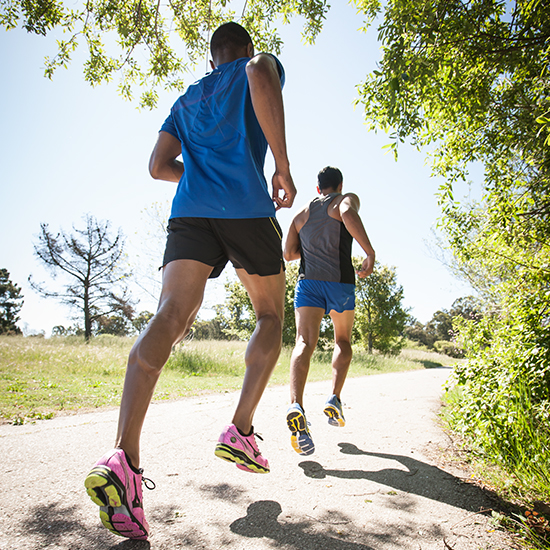
All across the country, fall marathoners are getting set to begin their three or four-month training programs. It promises to be a long haul, but the rewards waiting at the finish line far outweigh the many miles we will run this summer.
One of the many commonalities we are faced with are the same questions, asked by our well-meaning, non-running friends. Namely, what do you eat and drink and how do you possibly do it? And why?
All good questions, but our answers are usually so simple that the straightforwardness tends to confuse folks. I mean, my answers are (1) everything that gets in front of my face, (2) constantly, (3) that’s just what I do and (4) because that’s who I am. That’s me.
If you’re new to marathon training this summer, allow me to be the first to alert you that getting ready for a marathon doesn’t take entail magic foods, miraculous fluids or even complicated training plans. There’s no technique involved in marathoning; just a lot of hard, sweaty running. And for me that’s one of the beauties of the marathon: It’s clear and uncomplicated.
Granted, the why—the reason why we run marathons–is a bit more complicated as so many us have different reasons. I can only speak for myself, but my little humdrum life is nothing special. The marathon is my chance to work toward a goal and do something quite extraordinary that few people can imagine, much less achieve. I’ve finished plenty of marathons, but each one has been a major accomplishment, even when the result wasn’t exactly what I envisioned.
Fortunately, I happen to be one of those marathoners who enjoys the process, more than the actual race. Marathon success is always so dependent on factors I have no control over—namely weather—that I am lucky to find the training nearly as satisfying. Especially long runs.
Not all marathon training programs are alike, but most training programs designed for mortals look like this: Run four or five days during the week and on the weekends, go long. Sprinkle in several tempo runs, some hills and you’re basically good to go.
Certainly, the intensity, terrain and length of the long runs vary from runner to runner, but it’s a clear cut process. As we get deeper into our training programs and as we get stronger, the long runs get longer and before you know it, 20-22 miles is a piece of cake. Some of the training plans even go farther than that (up to 32-mile long runs), but the basic principle of gradual adaptation is the same.
Our bodies adapt to the different stresses we place on it as we go longer and longer, but the most important adaptation is in our heads. The two and three-hour long runs are as much for our mind as our legs. By the time we finish whichever schedule we are following, what once seemed incomprehensible—covering 26.2 miles—no longer is.
A friend of mine—a former world-class marathoner, now a college coach—once summed it up to me with one cliché: “The marathon is mind over matter. If you don’t mind, it don’t matter.”
Precisely.
There is no shortcut. The marathon’s going to hurt. They all do. None are easy. But dealing with that discomfort and running past it is what the marathon is all about.
Put in the training this summer and will find this fall that the only certainty in every marathon is the finish line. That’s the one goal we all share.
Plain and simple.
